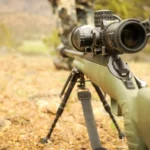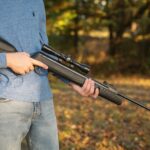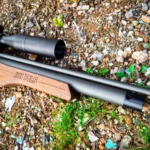Trotlining is one of the oldest fishing methods and still one of the most fun and reliable ways to ensure a good catch. There is no faster way to fill the freezer than learning to master the trotline. Even as a 10-year-old, I found that setting one up was a fairly easy lift. However, picking the best location takes some skill.
Trotlines should be set where there is some kind of current. A gentle lake current, such as an inlet stream, the fork where two streams or rivers come together, and gentle river eddies are all perfect trotline areas. Trotlines should never be set where state regulations make them illegal.
When it comes to setting trotlines, the general idea is easy. Stretch a line with a number of baited hooks hanging from it across a promising bit of stream, anchoring it on both ends. How complicated it gets from there depends on the style of the angler and the savvy of the fish. This article covers the basics of placing trotlines plus a few good ideas to try.

Table of Contents
1. Locate the Current to Set Your Trotline
When it comes to setting trotlines for catfish, one of the most important things is to set the line where “catfish will come to feed.” Many fish love moving water and will usually travel upstream to find food that they smell in the water while they are downstream.
While several species are notorious for hiding out in holes and undercuts when they come to feed, they tend to hunt where the water is a little shallower, and it’s moving. When pole fishing, anglers try to lure a bite while they are in their hiding place. However, trotline fishing depends on the fish coming out to find food, so natural feeding places must be identified.
- Look in river bends where the current swirls sideways a little, bringing food into the current.
- Stream junctions where two or more streams flow together, causing a swirling smorgasbord of snacks brought downstream.
- Other places where the current will bring tasty morsels downstream. This does not mean fast-moving water, necessarily, but areas where the stream should bring fresh bites that a fish will come looking for.
- Lakes can be hard to trotline, especially when regulations allow only one trotline per angler. It is hard to decide where to place it until a honey hole is discovered. Walk or cruise the lake to discover areas where the water has some kind of current. Inlet areas are perfect. Start by trotline fishing those areas with anchors.
Once a promising area is identified, the trotline can be set with bait so that the fish is not disappointed.
This video gives some additional great tips for both finding a good location and what times of year to set a line:
Related The 4 Best Tasting Types of Panfish.
2. Run the Trotline From Tree to Tree
The easiest way to set a catfish trotline is to anchor between two trees, sturdy tree roots, or two stumps.
- Anchor one end to a tree on one side of the stream or river.
- Boat or swim across to the other side and anchor the opposite end to a tree on the other bank.
- Small weights should be placed at intervals along the line to keep it from floating up.
Catfish feed on and near the bottom, so a bunch of bait floating high up in the current will not be very effective. Weights placed at intervals should keep the line evenly submerged. The height can be adjusted by adding or taking away slack on the lines fixed to the trees on either side.
3. Run the Trotline at an Angle and Vary the Depth
Experienced anglers have figured out a few ways to maximize the catch on trotlines. The key is envisioning how the fish are going to enter the fishing area and what they will be looking for. As they swim up toward a gentle current such as a stream inlet to a lake, they will also vary their depth as the bottom ascends to join the stream.
- Set trotlines at a 45-degree angle to the current, or as close as possible. A fish who is swimming upstream in search of food will have a single chance to spot and bite at bait set in a straight line. Put a nice slant on the trotline and increase the chances of a bite with every swish of the fish’s tail as it cruises up the line.
- Set trotlines at an uneven depth. The river bottom or lake bottom is not an even depth. Lines set in a straight line and all at the same depth will likely set some baits in the mud, while some are hanging too high in the current. Know the bottom. Set the line high toward the bank and low in the middle to follow the streambed.
- Sometimes the best setup is to have one end anchored to the bank and the other end anchored in the middle of the stream to place the trotline across a little current swirl that will be irresistible to catfish.
Be willing to think outside the box but within state regulations when it comes to setting trotlines.
4. The Floating Trotline
A different way to set trotlines is to create a floating trotline with longer lines. This method uses the current to help bob the baited hooks, increasing the temptation on the end of each snood.
- Make a regular trotline setup, but do not anchor the ends to trees or stumps.
- Each end of the trotline has a separate nylon anchor line that attaches to anchors a few feet below the trotline on the bottom. Think of the setup as a capital H, with the middle bar being the length of the trotline. There is an anchor on the base of each upright of the H.
- Each anchor line also has a floating buoy on the top to keep the anchor line tight between the anchor and the buoy. Imagine the buoys being placed on the top of each upright on the H.
- Floats are attached with line leads at intervals along the trotline to keep it bobbing up in the water rather than sagging onto the bottom. These floats will be visible on the top of the water, but the trotline will be a few feet under the water, suspended by the float lines.
This is a great way to trotline, especially in lakes where there are not good shoreline anchor points anyway. Plus, the depth of the trotline can be adjusted by attaching longer leads between the trotline and the floats.
Having trouble spotting your trotlines? Check out this video which has a really good idea:
Make Sure the Trotline is Legal
Some states have banned trotlines altogether, while other states have regulations regarding the type, makeup, and placement of trotlines. There are a lot of different reasons for this.
- Trotlines stretched across navigable waterways are hazardous, and in nearly all states, this is illegal.
- Some states require that trotlines have identification on them and that they be removed within a certain timeframe. Those left past the allotted time are considered forfeit.
- Other states ban live bait or have regulations on the type of bait that can be used on trotlines.
- Some states disallow certain kinds of lines, hooks, weights, and floats.
- Some states allow trot lining during the day but not overnight.
Whether the trotline is built or purchased, it is important to make sure that the line falls within the state and county Fish and Game regulations. Illegal trotlines will be confiscated, and the anglers can face heavy fines for poaching.
Final Thoughts
Trotlines are a fun, efficient, and traditional way to catch a mess of catfish and other bottom-feeders like crabs. The key is to be willing to think like a fish and try different ways of trotline fishing until the perfect setup is discovered.
As with anything, persistence is key. You have to learn what works best in your location and what setup brings in the most fish. Of course, as you know, that challenge is the fun part and why we are doing this in the first place.
Thanks for reading!
For more, check out 4 Best Tasting Freshwater Fish (And How To Prepare Them).
Image courtesy of K.C. District U.S. Army Corps of Engineers











































